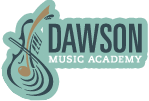
ABC Basics for Music Parents
Have you experienced that parenting moment when your child asked you a question that you didn’t know how to answer? I’ve had a few, and I must admit it’s a bit uncomfortable. As a mom, I want to be able to answer my son’s questions and support him as he learns new things.
Recently, I attempted to coach my second grader on his karate forms. I quickly became frustrated. I wanted to help him practice and improve, but I had no point of reference for understanding the skills he was learning. As I reflected on my lack of knowledge with karate, I realized that many parents of musicians may experience the same frustration when trying to coach their musicians.
While there’s no way to teach parents everything about music in five minutes, here are the ABC basics of music to get you started.
A: Alphabet for Musicians
The musical alphabet consists of the first seven letters of the alphabet (A-B-C-D-E-F-G). Each of these notes is repeated on the instrument, but will sound at a different pitch. For example, on the piano there are seven different A’s ranging from low A to high A.
Each note name has a special place on the musical staff. Learning to read music is an important skill for a musician. Similar to learning to read in kindergarten, reading music is a skill that initially requires a lot of practice, but has invaluable results. Check out our recommendations for apps that provide fun ways for students to gain this important skill.
B: Beats per Measure
The beats per measure indicate the groupings of rhythm patterns within each song. There are several types of notes that indicate different rhythms. The most common note types for beginning musicians are quarter notes, half notes, and whole notes. For beginning musicians, most music will have four beats per measure.
It is important for musicians to develop a strong rhythmic sense to help them keep a steady beat throughout the song. One tendency for young musicians is to play the “easy” parts of the song faster and the “harder” parts of the song slower. Depending on the style of the song, the speed of the song may be slow or fast, but it should stay constant throughout the song.
C: Connect the Dots
In addition to the basics of reading the musical alphabet and counting rhythms, students learn to “connect the dots” of music. Musicians learn to play phrases and interpret the music with dynamics.
Once a student learns the basics of the notes and rhythms of a song, that doesn’t necessarily mean they have completed the song and are ready to move on to a new song. The art of musicianship is connecting with the music and interpreting the song.
At Dawson Music Academy, we focus on equipping parents with resources. We recognize that each parent plays an invaluable role in supporting their child’s success. We invite parents to communicate with instructors, sit in lessons when appropriate, or make a video recording of which songs to practice. Parents interested in starting their own musical journey can register today to connect with one of our instructors who specializes in teaching adults the joy of music.
Contributor Kimberly Jones is a wife, mother, and the Director of the Dawson Music Academy at the Dawson Family of Faith.
